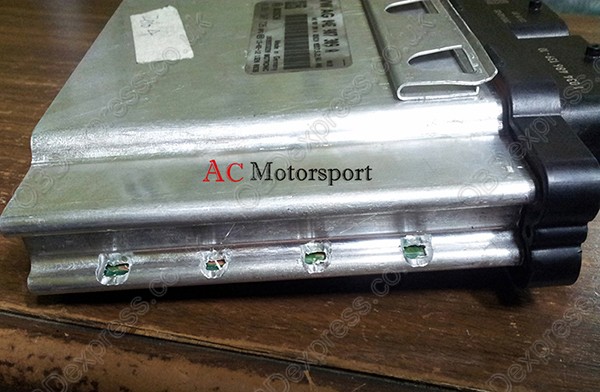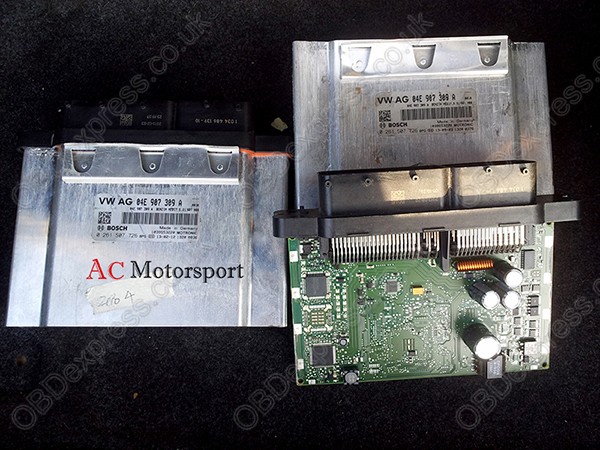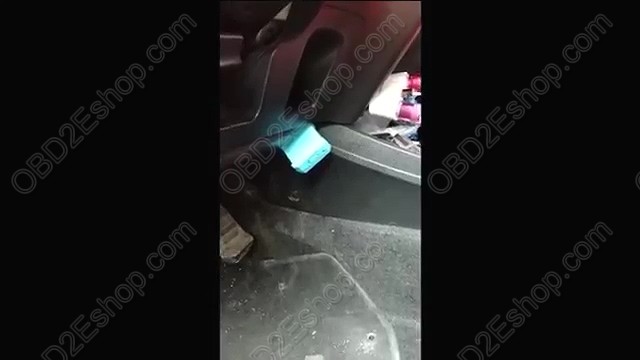obdexpress
VCM 2 in Cold/Hot Weather - Issues & Solutions
Le 10/07/2018
VCM 2 unit is housed in a shock resistant polycarbonate case with rubber end boots, along with an extended operating temperature and voltage range, for increased durability and ruggedness in service bay and road test environments,
BUT do ensure the VCM II is not subjected to extreme temperature or prolonged exposure to direct sunlight that may cause heating of the VCM II.
Environmental requirement: Temperature & Humidity
Operating:
VCM II unit: -20ºC to 70ºC (-4ºF to 158ºF)
Wireless USB 2.0 adapter: 0ºC to 50ºC (32ºF to 122ºF) at 10% to 90% RH non-condensing
Storage: -40ºC to 85ºC (-40ºF to 185ºF) at 10% to 90% RH non-condensing
Issues & Causes/Solutions: VCM 2 & Temperature
Issue:
VCM II turns off (shutsdown/suspends-operation, all LEDs off) immediately after being powered by the USB cable or DLC cable
Cause/Solution:
- Verify the ambient temperature is within the acceptable operating range for the VCM II device: -20°C to 70°C (-4°F to 158°F)
- If the ambient temperature is outside this range allow the temperature to return to the acceptable operating range and the VCM II will automatically resume operation
- If VCM II error persists when the ambient temperature returns to its operating range, contact your regional technical support
Issue:
VCM II does not appear in the list of detected wireless devices in IDS and its Power LED blinks at a periodic rate
Cause/Solution:
- Verify the VCM II is connected to the DLC cable and the DLC cable is connected to the vehicle. The VCM II must be powered using the DLC cable for the wireless interface to be operational
- Verify the ambient temperature is within the acceptable operating range for the VCM II's wireless interface: 0°C to 50°C (32°F to 122°F)
- If the ambient temperature is outside this range allow the temperature to return to the acceptable operating range and the VCM II's wireless interface will automatically be enabled and the Power LED will stop blinking and stay illuminated
- If VCM II wireless interface problem persists when the ambient temperature returns to its operating range, contact your regional technical support
Issue:
VCM II's Power LED blinks continuously after being powered using the DLC cable
Cause/Solution:
- Verify the ambient temperature is within the acceptable operating range for the VCM II's wireless interface: 0°C to 50°C (32°F to 122°F)
- If the ambient temperature is outside this range allow the temperature to return to the acceptable operating range and the VCM II's wireless interface will automatically be enabled and the Power LED will stop blinking and stay illuminated
- If VCM II wireless interface problem persists when the ambient temperature returns to its operating range, contact your regional technical support or ask obdexpress.co.uk for help
Email: sales@OBDexpress.co.uk
Skype: obd2express.co.uk
WhatsApp: +86-18750906257
 Commentaires textes : Écrire
Commentaires textes : Écrire
Main difference between PCMflash Original and Clone read/write Ford ECUs
Le 29/06/2018
What’s the main difference between original and clone PCMflash ECU programming tools? It lies in the price and functionality. You’ll get what you pay for. Look here to get more details...
Cloned PCMflash works with a device called “KTM OBD” for $400 around;
Original PCMflash works with a Powerbox for PCMflash for $800 around.
Device for the clone:
Source: http://www.obdexpress.co.uk/wholesale/ktm-obd-ecu-programmer-gearbox-power.html
Device for the original:
Source: http://ecutools.eu/chip-tuning/powerbox-for-pcmflash%20/
PCMflash china clone supports:
Ford Focus 3: 1.0L Ecoboost 2015+ GTDI 100/125PS [DA6A] (MED17) (OBD)
Ford Focus 3: 1.5L Ecoboost 2015+ GTDI 150/180PS [FV6A] (EMS2510/EMS2511) (OBD)
Ford Kuga 2: 1.6L Ecoboost GTDI AT 150/182PS (MEDG17) (OBD)
Ford Kuga 2: 1.5L Ecoboost 2015+ GTDI 150/180PS [FV6A] (EMS2510/EMS2511) (OBD)
Ford Kuga 2: 2.5L Duratec Ti-VCT 150/171PS (OBD)
Ford Kuga 2: 2.5L Duratec Ti-VCT MY2017 150/171PS [GV6A] (EMS24XX) (OBD)
Ford Mondeo 5: 2.0L Ecoboost GTDI 200PS (MEDG17) (OBD)
Ford Mondeo 5: 2.5L Duratec Ti-VCT 150/171PS (OBD)
Ford Explorer: 3.5L Ecoboost V6 GTDI 360PS (MEDG17) (OBD)
Ford Explorer: 3.5L Cyclone V6 Ti-VCT 249/294PS (2011) (OBD)
Ford Explorer: 3.5L Cyclone V6 Ti-VCT 249/294PS (2016) (OBD)
Ford F150/250/350: 6.2L Boss V8, 5.0L Coyote V8 (OBD)
PCMflash genuine supports:
Module 1 – Ford Focus 3
Ford Focus 3: 1.6L Sigma Ti-VCT 85/105 / 125PS (EMS2204) [ VR / WR / CK ]
Ford Focus 3: 2.0L The Duratec GDI Ti-VCT 150 / 170PS (MED17) [ RD / WR / CK ]
Ford Focus 3 ST: 2.0L Ecoboost GTDI 250PS (MED17) [ RD / WR / CK ]
Ford Focus 3: 1.6L, 2.0L PowerShift TCM (6DCT250) [ VR / WR / CK ]
Module 2 – Ford Kuga 2, Ford Explorer from 2011 MY
Ford Kuga 2: 1.6L Ecoboost GTDI AWD 150 / 182PS (MEDG17) [ RD / WR / CK ]
Ford Mondeo 5: 2.0L Ecoboost GTDI 200PS (MEDG17) [ RD / WR / CK ]
Ford Explorer 2011-: 3.5L Ecoboost V6 GTDI 360PS (MEDG17) [ RD / WR / CK ]
Ford Kuga 2: 2.5L The Duratec Ti-VCT 150 / 171PS [ RD / WR / CK ]
Ford Mondeo 5: 2.5L Ti-VCT 150 / 171PS [ RD / WR / CK ]
Ford Explorer 2011-: 3.5L Cyclone V6 Ti-VCT 294PS [ RD / WR / CK ]
Module 3 – Diesel engines 2.0L, DCM3.5/DCM6.1/SID206
Ford Focus 3: 2.0L DW10C STAGE 5 140 / 163PS (DCM3.5) [ VR / WR / CK ]
Ford Kuga 1: 2.0L DW10C STAGE 5 / 163PS (DCM3.5) [ VR / WR / CK ]
Ford Kuga 2: 2.0L DW10C STAGE 5 140 / 163PS (DCM3.5) [ VR / WR / CK ]
Ford Mondeo 4: The 2.0L DW10C STAGE 5 The 140 / 163PS (DCM3.5) [ VR / WR / CK ]
Ford Mondeo 4: 1.8L Lynx, 2.0L The DW10C STAGE 4 (SID206) [ RD / WR / CK ]
Ford Mondeo 5: 2.0L The DW10F STAGE 5/6 150 / 180PS DCM6.1) [ RD / WR / CK ]
Ford Focus 2: 1.8L, 2.0L Duratorq Lynx / DW10C (SID202 / SID206) [ RD / WR / CK ]
Module 4 – Petrol engines 1.25-1.6L, Ford Fiesta from 2008 MY, Ford Mondeo 4
Ford Fiesta: 1.25L, 1.4L Sigma Ti-VCT (EMS2102) [ RD / WR / CK ]
Ford Fiesta: 1.6L Sigma Ti-VCT EMS2010) [ RD / WR / CK ]
Ford Fiesta: 1.6L Sigma Ti-VCT USA [AE81] (EMS2205) [ WR / CK ]
Ford Mondeo 4: 1.6L Sigma Ti-VCT 110 / 125PS (EMS2101) [ RD / WR / CK ]
Module 5 – Petrol engines 1.6, 2.0л, Ecoboost T-PROT7
Ford Focus 3: 1.6L Ecoboost GTDI 150 / 180PS (MED17) [ RD / WR / CK ]
Ford Mondeo 4: 2.0L Ecoboost GTDI 200 / 240PS (MED17) [ RD / WR / CK ]
Module 6 – Petrol Engines 1.0, 1.6L, Ecoboost T-PROT12
Ford Focus 3: 1.0L Ecoboost GTDI 100 / 125PS (MED17) [ RD / WR / CK ]
Ford Kuga 2: 1.6L Ecoboost GTDI FWD 150PS (MED17) [ RD / WR / CK ]
Ford Fiesta: 1.0L Ecoboost GTDI 100 / 125PS (MED17) [ RD / WR / CK ]
Module 7 – Diesel engines 2.2L, 3.2L Ford Transit/Tourneo/Ranger, Land Rover Defender
Ford Transit 2007: 2.2L, 2.4L Diesel 85/100/115 / 140PS (DCU101-108, DCU201-208) [ RD / WR / CK ]
Ford Transit 2012: 2.2 L Diesel 100/125/140 / 155PS (SID208) [ WR / CK ] Writing after unlocking in BSL mode
Land Rover Defender 2012: 2.2L TD4 (SID208) [ WR / CK ] Writing after unlocking in BSL mode
Ford Transit 2012: 2.2L Diesel 100/125/140 / 155PS (SID208 / BSL) [ RD ]
Ford Ranger: 3.2L Diesel (SID209) [ WR / CK ] Writing after unlocking in BSL mode
Ford Ranger: 3.2L Diesel (SID209 / BSL) [ RD ]
Ford Transit : 2.2L Diesel (SID211) [ WR / CK ] Writing after unlocking in BSL mode
Ford Ranger : 2.5L Duratec (EMS2207) [WR / CK ]
Module 14 – Petrol engines 1.6L, 2.0L, 2.3L, 2.5L Ford Mondeo 4
Ford Mondeo 4: 1.6L The Sigma Ti-VCT 110 / 125PS (EMS2101) [ RD / WR / CK ]
Ford Mondeo 4: 2.0L The Duratec HE ESU312 Galaxy / S-Max 2006) [ RD / WR / CK ]
Ford Mondeo 4: 2.0L, 2.3L The Duratec HE (ESU412 / 415) [ RD / WR / CK ]
Ford Mondeo 4: 2.5L The Duratec I5 225PS (ME9. 0) [ WR / CK ]
Module 20 – Ford Focus 2/Fiesta/Fusion
Ford Focus 2: 1.4L, 1.6L Duratec 85/100 / 115PS (SIM28 / 29) [ RD / WR / CK ]
Ford Focus 2: 1.8L, 2.0L Duratec HE 125 / 145PS (ESU131 / 411/418) [ RD / WR / CK ]
Ford Focus 2: 1.8L, 2.0L Duratorq Lynx / DW10C (SID202 / SID206) [ RD / WR / CK ]
Ford Fiesta / Fusion : 1.4L, 1.6L Duratec 85 / 100PS (SIM210) [ RD / WR / CK ]
Ford Focus 2 ST: 2.5L The Duratec I5 225PS (ME9.0) [ RD / WR / CK ]
Ford Kuga 1: 2.5L The Duratec I5 200PS (ME9.0) [ WR / CK ]
Module 21 – Ford USA
Mazda6 3.0L AJ 2003-2005 [ RD / WR / CK ]
Escape, Explorer, Mazda CX9 -2009 (PCM150F) [ RD / WR / CK ]
Mustang 2005-2009 (PCM170F) [ RD / WR ]
Explorer, Mazda CX9 2010-2011 / 2012 (M799G) [ RD / WR / CK ]
Focus 2008-2011 (GreenOak / PCM190) [ RD / WR / CK ]
Escape, Mariner, Tribute 2009-2011 (9L8A ) [ RD / WR / CK ]
Ford F350 6.0L (BlackOak / PCM122 / 448KB) [ RD / WR / CK ]
Module 29 – Ford PWM – Requires Ford VCM2.
Mondeo 3 1.8L, 2.0L, 2.5L, 3.0L Duratec HE (LEVANTA) [ RD / WR / CK ]
EEC-V 216K (EEC-V) [ RD / WR ]
3.0L, 4.0L, 4.6L Duratec V6 / VD ( WR / CK )
1.8L, 2.0L, 2.2L Duratorq TDCi (Visteon) [ RD / WR ]
1.8L, 2.0L, 2.2L Duratorq TDCi (Delphi) [ RD / WR ]
Module 32 – Ford Focus 3 2015
1.0L Ecoboost 2015+ GTDI 100 / 125PS [DA6A] (MED17) [ WR / CK ]
1.5L Ecoboost 2015+ GTDI 150 / 180PS [FV6A] (EMS2510 / EMS2511) [ RD / WR / CK ]
3.5L Cyclone V6 Ti-VCT 249 / 294PS (2016) [ RD / WR / CK ]
2.5L Duratec Ti-VCT 150 / 171PS [GV6A] (EMS24XX) [ RD / WR / CK ]
Module 33 – Ford EcoSport/Fiesta 2015+
2.0L Duratec HE 140PS (IAW 7GFR.HR) [ RD / WR / CK ]
1.6L Sigma Ti-VCT 85/105/110 / 122PS (EMS2211) [ WR / CK ]
1.6L Sigma Ti-VCT USA [C1BA] (EMS2214) [ WR / CK ]
Module 56 – Ford SID807EVO/EDC17C10
Ford Focus 3: 1.6L DV6C (SID807EVO) [ WR / CK ] Writing after unlocking in BSL mode
Ford Mondeo 4: 1.6L DV6C (SID807EVO) [ WR / CK ] Writing after unlocking in BSL mode
Ford 1.6L DV6C (SID807EVO / BSL) [ RD / UNLOCK ]
Ford Focus 3: 1.6L ECOnetic 105PS 2012+ (EDC17C10) [ RD / WR / CK ]
Ford Fiesta: 1.4L, 1.6L DV4 / 75 DV6 / 95PS 2010-2011 (EDC17C10) [ RD / WR / CK ]
Ford Fiesta: 1.5L, 1.6L DV5 / DV6 70/75 / 95PS 2012+ (EDC17C10) [ RD / WR / CK ]
Ford Focus 3: 1.5L DV5F 90/105 / 120PS (EDC17C70) [ RD / WR / CK ]
Ford Fiesta: 1.5L DV5F 90/105 / 120PS (EDC17C70) [RD / WR / CK ]
Src:
http://blog.obdexpress.co.uk/2018/06/29/pcmflash-original-vs-clone-read-write-ford-ecus/
 Commentaires textes : Écrire
Commentaires textes : Écrire
How to open ECU Bosch MED17 to read with Ktag/Kess
Le 28/06/2018






read / write
You can read with Ktag, but ugly job to open ecu..






read / write
You can read with Ktag, but ugly job to open ecu..
 Commentaires textes : Écrire
Commentaires textes : Écrire
How to open ECU Bosch MED17 to read with Ktag/Kess
Le 28/06/2018






read / write
You can read with Ktag, but ugly job to open ecu..






read / write
You can read with Ktag, but ugly job to open ecu..
 Commentaires textes : Écrire
Commentaires textes : Écrire
How to use Easy Key Maker Honda key programmer via OBD?
Le 27/06/2018




 Commentaires textes : Écrire
Commentaires textes : Écrire




